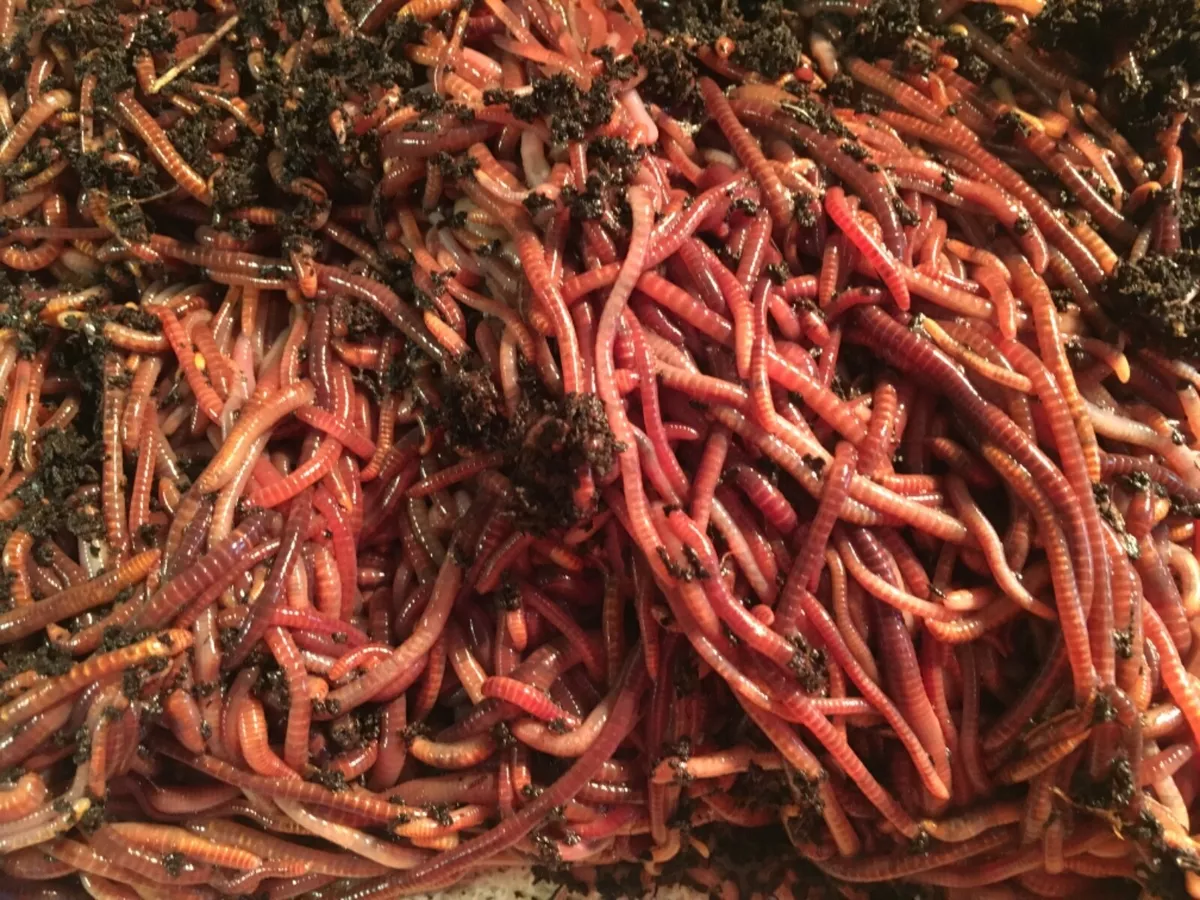Discovering the Mechanisms of Red Wiggler Composting: A Comprehensive Guide to the Process and Its Favorable Influence On Sustainable Horticulture Practices
The intricate systems of red wiggler composting, using the distinct physiology of Eisenia fetida, present an engaging method for improving sustainable horticulture methods. As urban horticulture gains traction, understanding the subtleties of this composting method comes to be progressively pertinent.
Recognizing Red Wigglers
Red wigglers, clinically known as Eisenia fetida, are a types of earthworm highly pertained to for their effectiveness in composting organic waste. These worms prosper in nutrient-rich atmospheres, specifically in rotting raw material, making them optimal for vermicomposting systems - Red Wiggler Composting. Characterized by their reddish-brown coloration and fractional bodies, red wigglers are smaller sized than usual earthworms, normally measuring between three to 4 inches in length
Their one-of-a-kind physiological qualities enhance their composting abilities; for example, they possess a high reproductive price, enabling populations to increase rapidly under appropriate problems. Red wigglers consume natural material, simplifying via their gastrointestinal systems, which causes nutrient-rich castings that function as an outstanding natural plant food. Their voracious hunger allows them to process big quantities of food waste successfully, significantly lowering garbage dump payments.
In enhancement to their composting expertise, red wigglers play an important function in soil health. Red Wiggler Composting. They aerate the soil and assist in the disintegration of raw material, more improving the dirt ecosystem. Comprehending the features and ecological benefits of red wigglers is important for any individual aiming to implement sustainable gardening practices through efficient composting approaches
The Composting Refine
The composting procedure includes damaging down organic materials into nutrient-rich compost, a job that red wigglers excel at as a result of their specialized digestion systems. These worms take in food scraps, backyard waste, and various other natural issue, changing them right into useful compost through a series of chemical and biological procedures.
Originally, the raw material is combined with bed linen materials such as shredded paper or dried fallen leaves, producing an ideal environment for the worms. As the red wigglers consume this combination, they simplify through their gut, where microorganisms further decay the product. This procedure generates warmth, advertising microbial activity, which increases disintegration.

Benefits of Red Wiggler Composting
Eco-conscious people and numerous garden enthusiasts acknowledge the countless advantages of red wiggler composting, making it a prominent choice for efficient waste monitoring. One of the primary benefits is its capability to dramatically decrease natural waste in landfills - Red Wiggler Composting. Red wigglers efficiently damage down kitchen area scraps and other eco-friendly materials, transforming them right into nutrient-rich vermicompost that enriches soil health and wellness
Moreover, red wiggler composting enhances soil framework and fertility. The resulting vermicompost is including helpful microbes, which promote plant growth and improve nutrient retention. This all-natural plant food not just supports sustainable horticulture methods yet additionally reduces reliance on chemical fertilizers, fostering a much healthier ecological community.
Additionally, red wiggler composting is a space-efficient method, making it suitable for city garden enthusiasts with minimal room. The procedure can be conducted indoors or outdoors, permitting year-round composting regardless of climate conditions. Red wigglers are low-maintenance organisms that require very little treatment, making them accessible for novice gardeners.
Basically, the benefits of red wiggler composting expand beyond waste decrease; they add to much healthier soils, lasting gardening methods, and environmental stewardship, positioning it as a valuable technique in modern-day cultivation.
Finest Practices for Composting
For effective red wiggler next composting, adhering to finest methods is vital to optimize effectiveness and guarantee a productive environment for these worms. First, it is necessary to maintain an appropriate carbon-to-nitrogen ratio, preferably around 30:1. This equilibrium promotes optimal disintegration and improves the worms' health. Integrate a mix of green products, such as veggie scraps, and brown materials like shredded paper or cardboard.
Following, monitor dampness levels, going for a wet, sponge-like consistency. Excessively damp conditions can bring this about anaerobic decomposition, while extreme dry skin may impede worm task. Additionally, make sure correct aeration by turning the compost routinely, which assists protect against compaction and allows for sufficient oxygen circulation.
Temperature level is another important factor. Maintain a variety of 55 ° F to 77 ° F(13 ° C to 25 ° C) to advertise worm task and microbial growth. Stay clear of presenting meat, milk, and oily foods, as these can attract pests and produce smells.
Enhancing Lasting Horticulture
Lasting horticulture symbolizes a holistic approach that harmonizes ecological principles with practical gardening methods. By integrating techniques such as red wiggler composting, gardeners can substantially improve their methods, cultivating an extra resistant community. Red wigglers, renowned for their efficient decomposition capacities, convert natural waste right into nutrient-rich garden compost, thus enhancing the dirt without depending on chemical fertilizers.
Applying lasting horticulture methods, such as plant turning, buddy planting, and mulching, further enhances the benefits of composting. These practices not only boost soil structure and fertility yet additionally promote biodiversity, bring in beneficial pests and microorganisms that add to grow health and wellness. Additionally, using indigenous plants can lower water usage and reduce maintenance, straightening with water preservation efforts.

Conclusion
In verdict, red wiggler composting stands for an essential approach view website for enhancing sustainable gardening practices. Ultimately, the fostering of red wiggler composting can considerably contribute to environment-friendly horticulture, benefitting both metropolitan and beginner gardeners in their cultivation efforts.
The elaborate systems of red wiggler composting, utilizing the distinct physiology of Eisenia fetida, present an engaging avenue for enhancing lasting horticulture techniques. Comprehending the attributes and environmental advantages of red wigglers is vital for any individual looking to execute sustainable horticulture techniques with efficient composting methods.

In verdict, red wiggler composting represents an essential technique for improving lasting horticulture methods. Eventually, the adoption of red wiggler composting can substantially add to environmentally friendly horticulture, benefitting both city and beginner gardeners in their cultivation efforts.